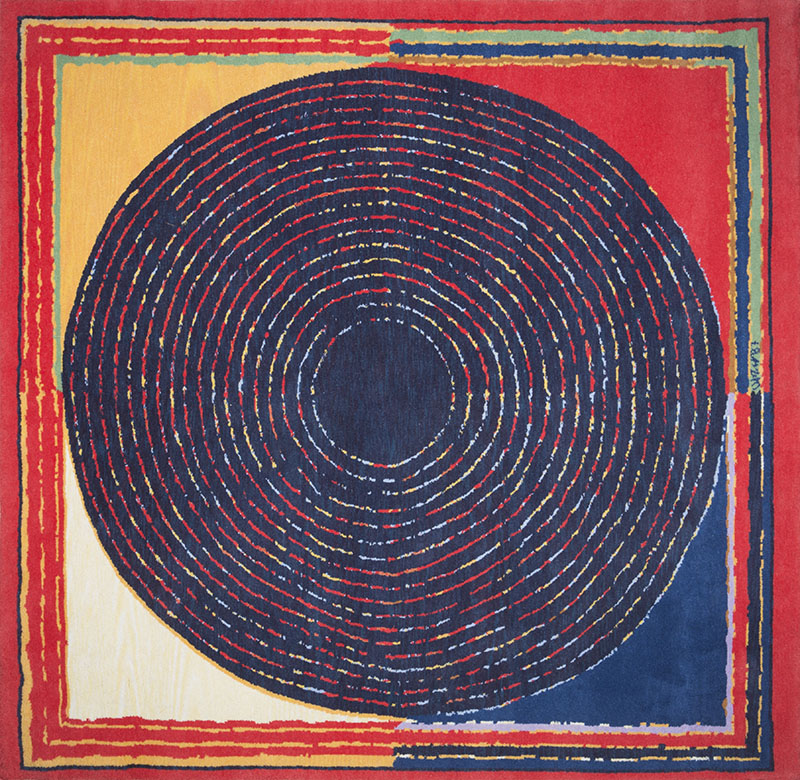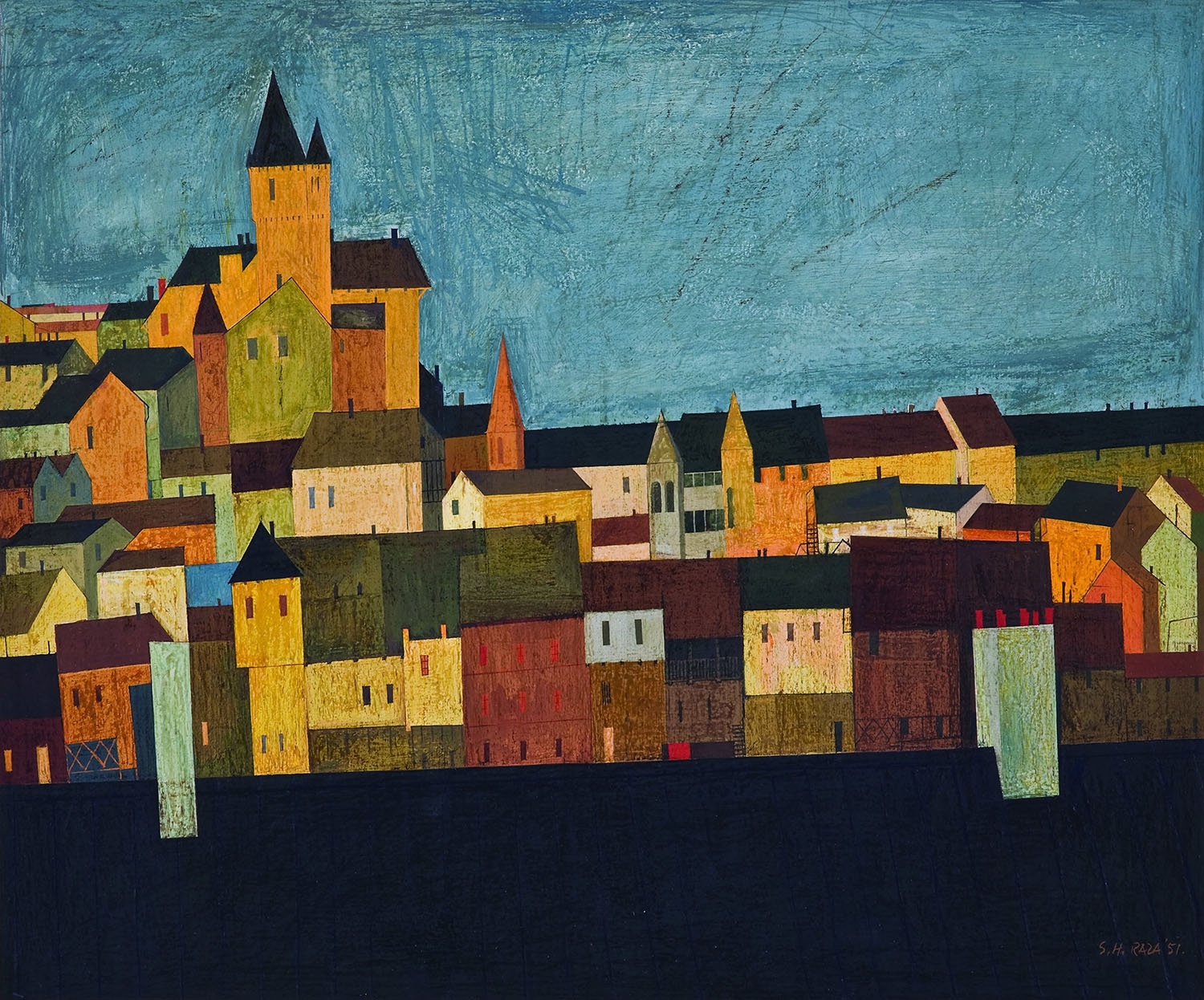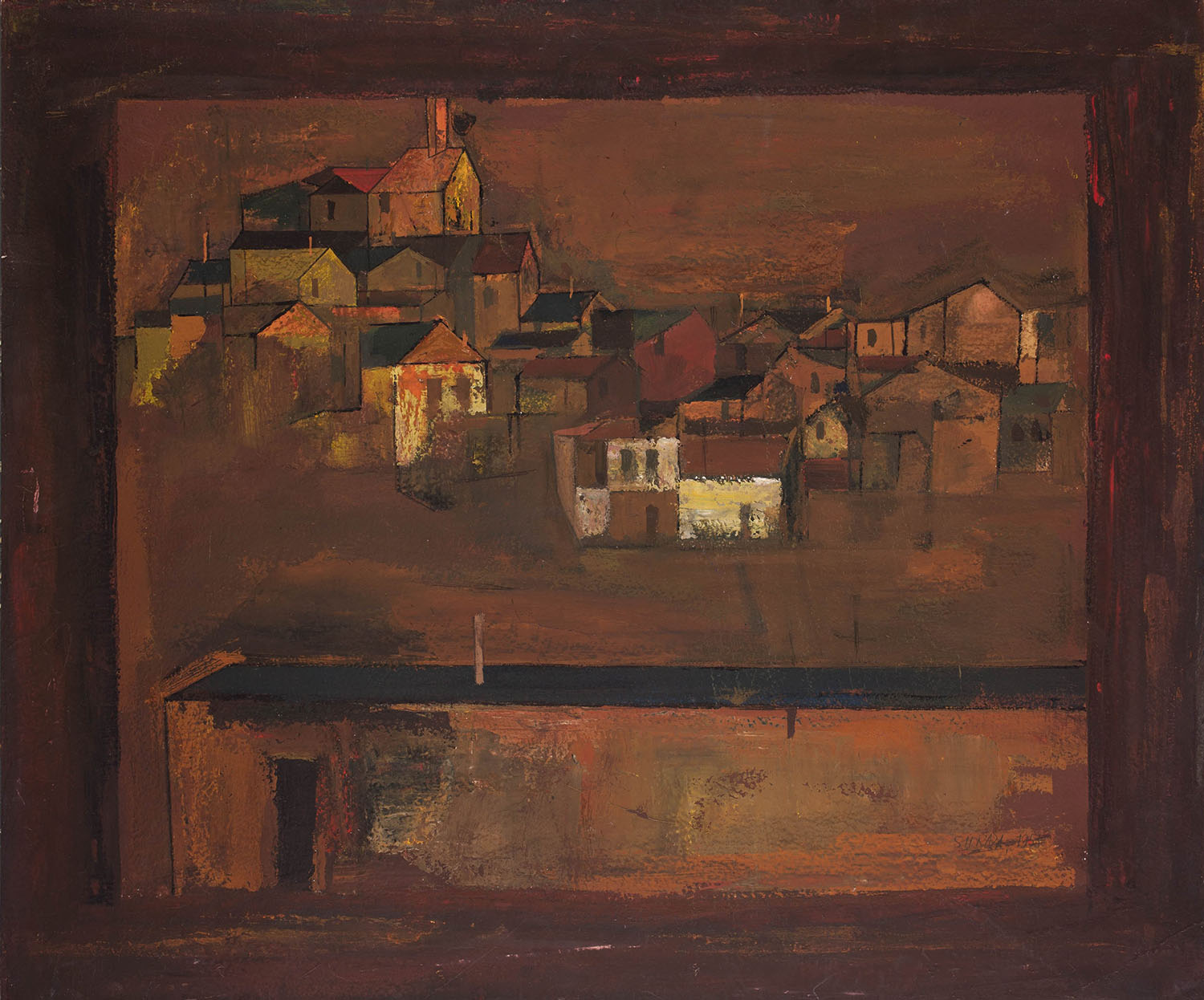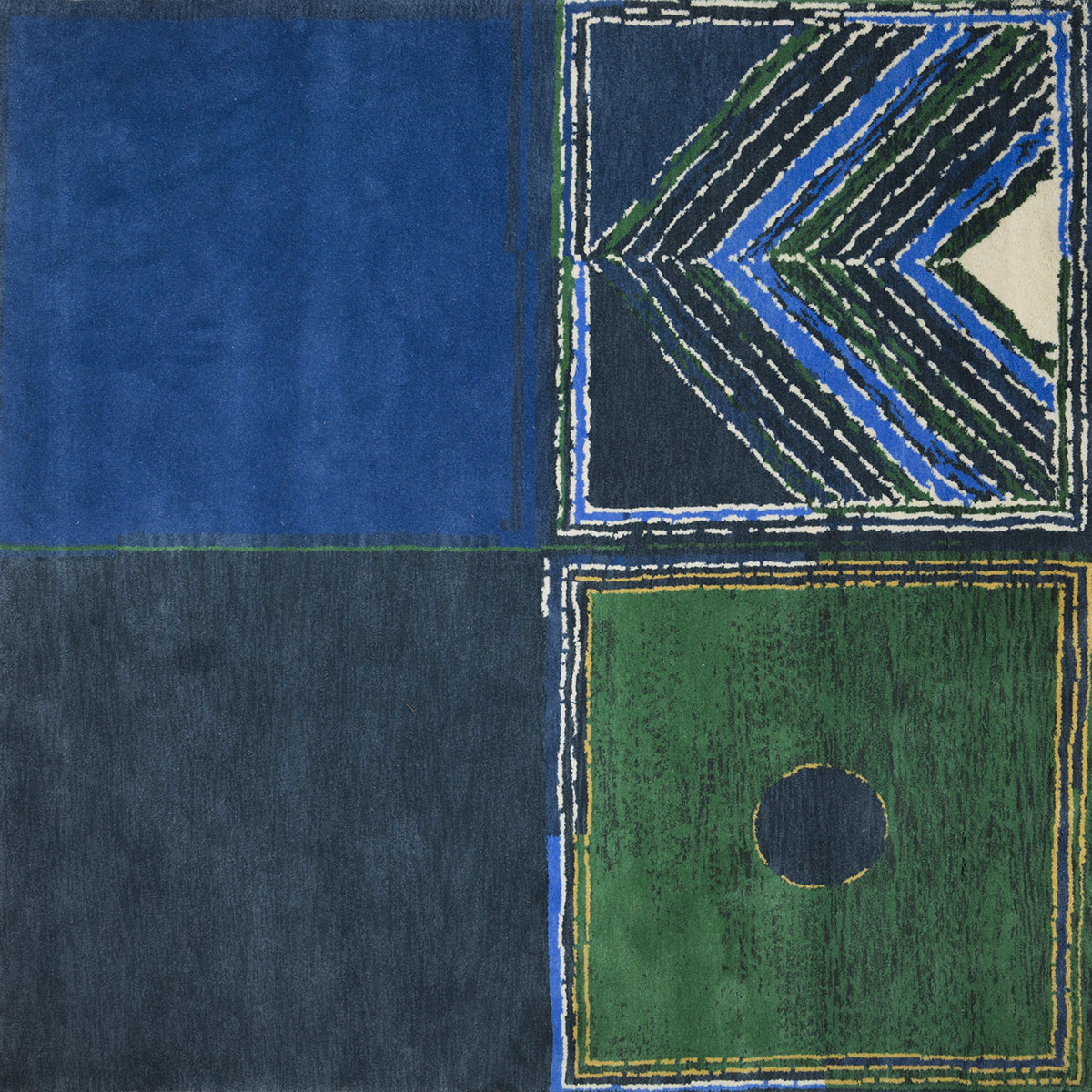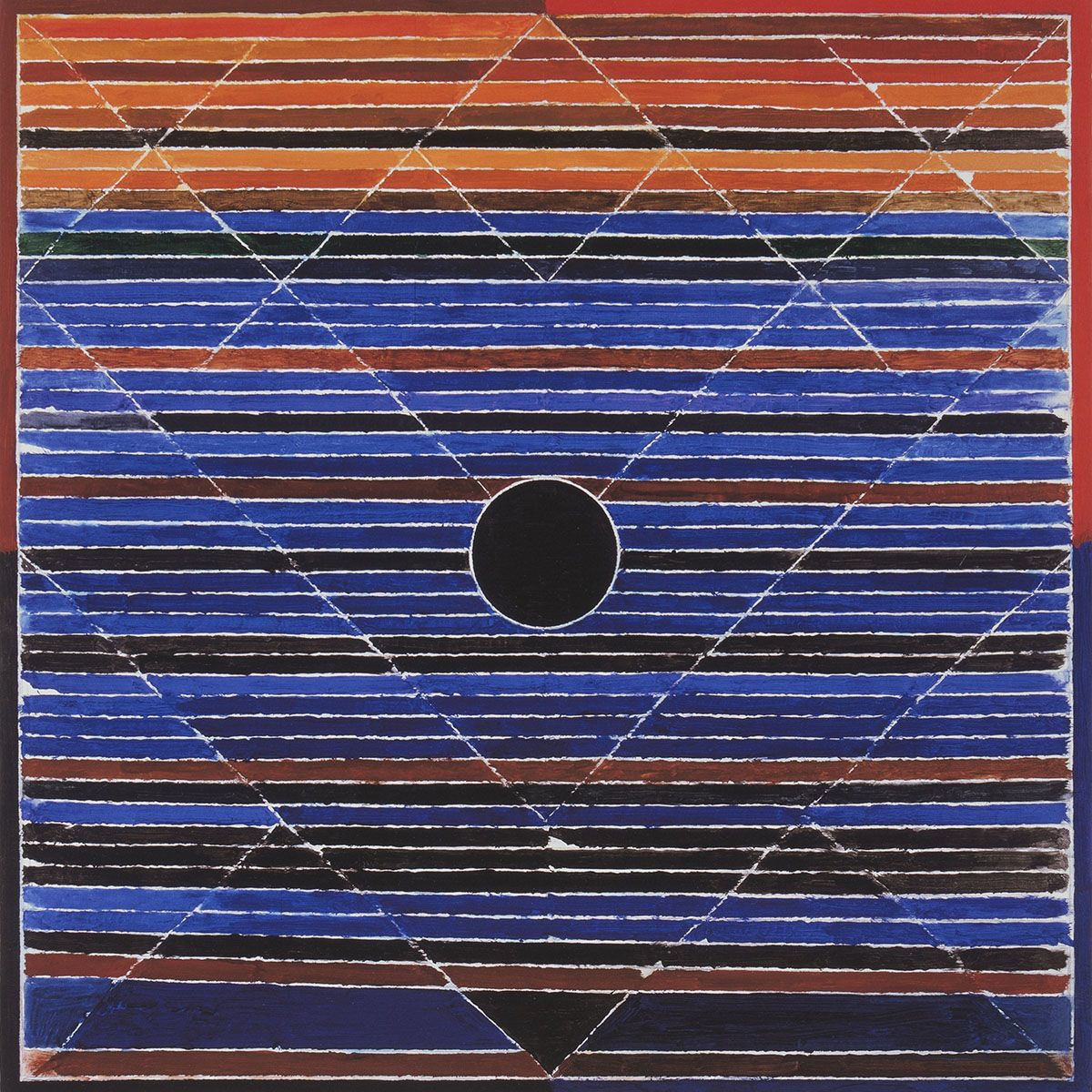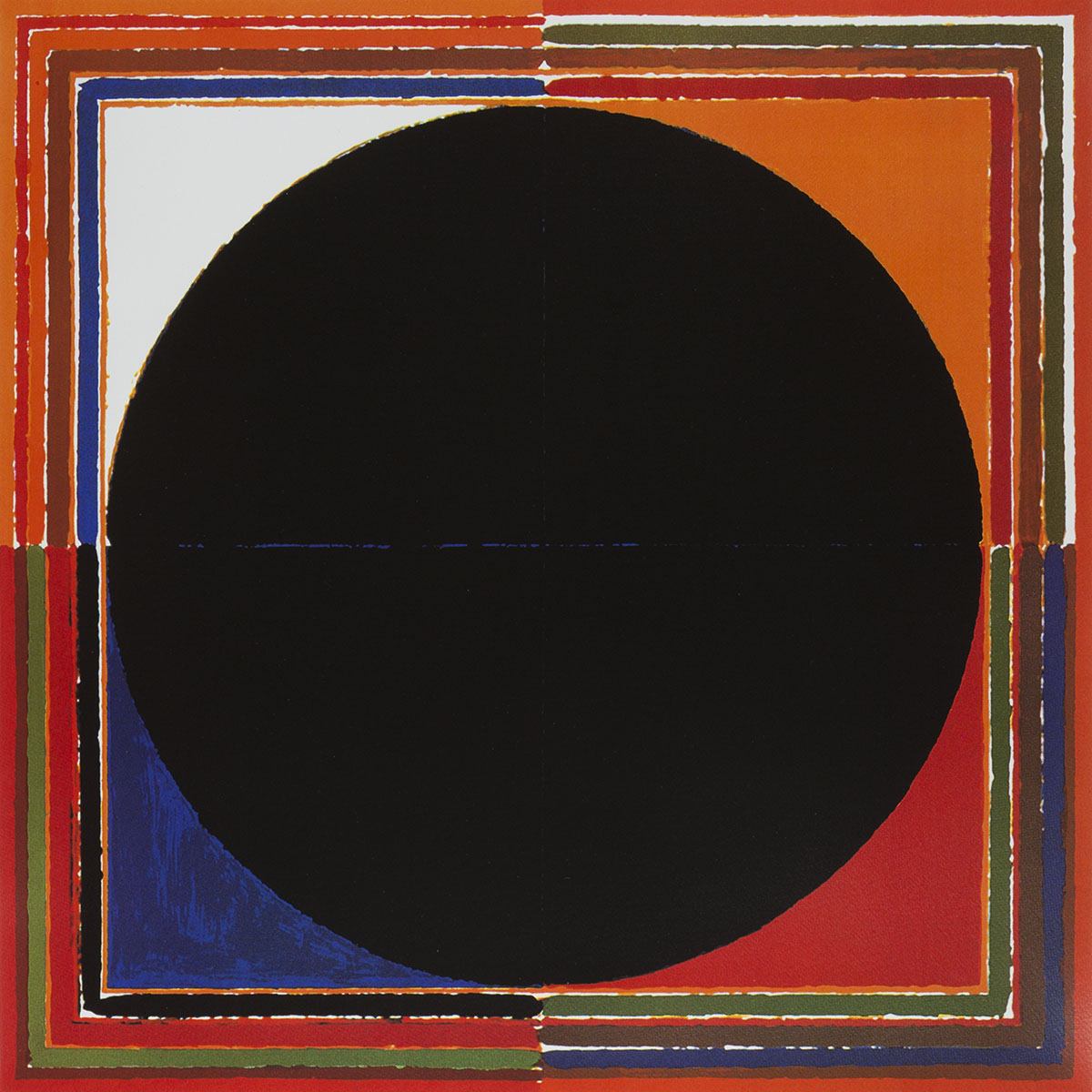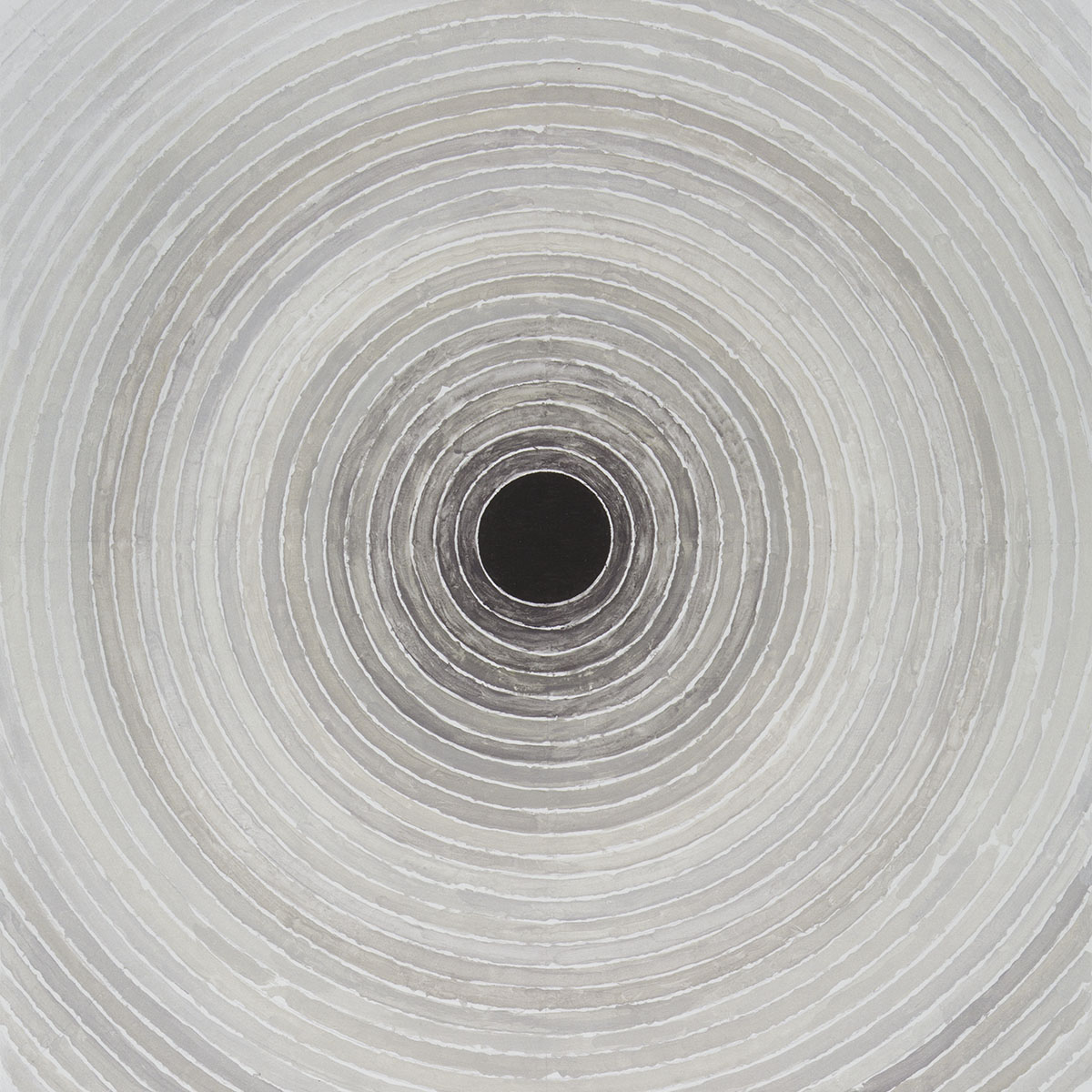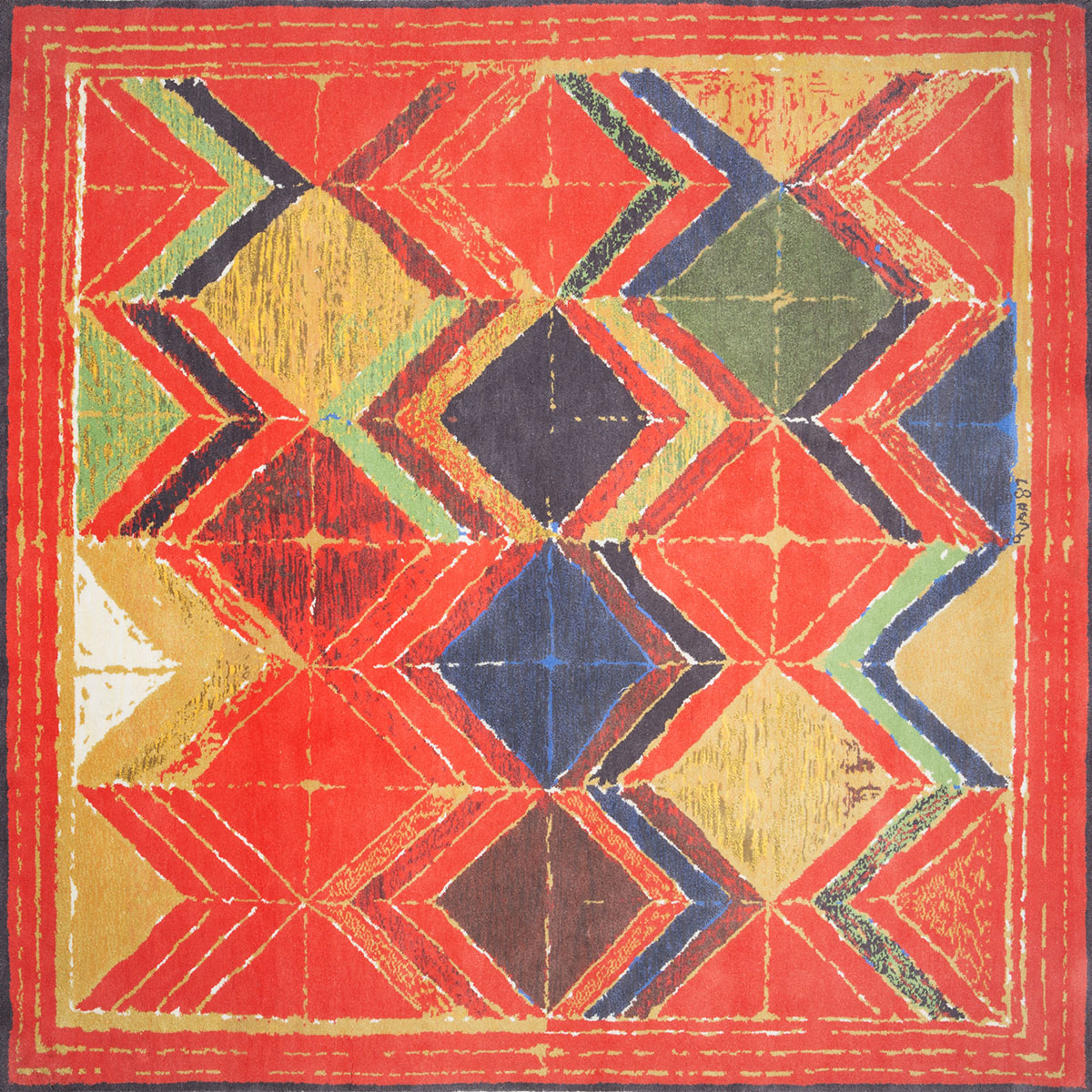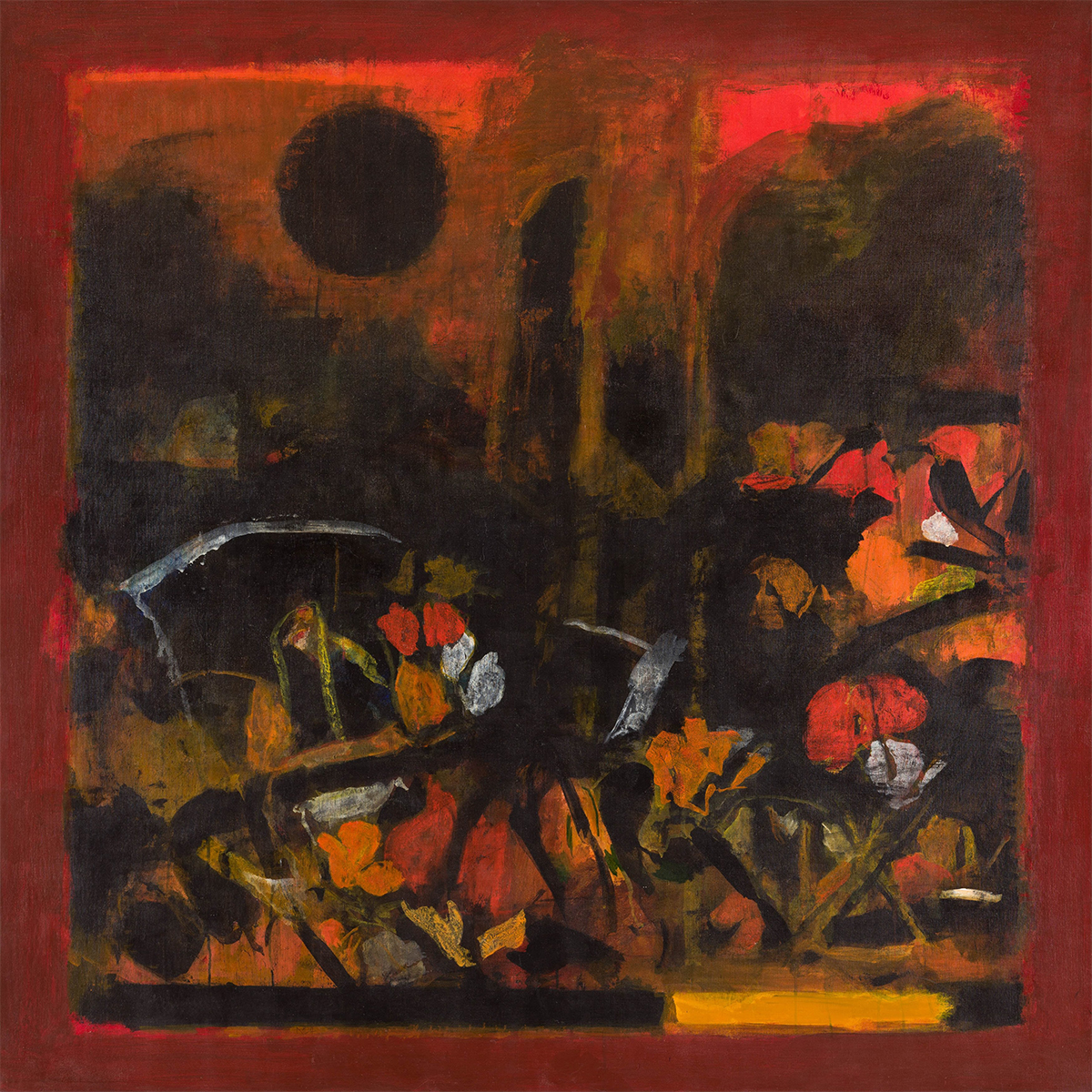ARTICLE
SH Raza
In the same year, at the age of twenty-eight, Raza obtained a scholarship from the French government to study at the École Nationale Supérieure de Beaux-Arts, Paris. In 1952, he mounted a group exhibition with Akbar Padamsee and Souza at Galerie St. Placid, Paris — his first exhibition since arriving in France. The exhibition was a success and Raza was invited by the Parisian Galerie La France to showcase his work. The first few years of Raza’s life in Paris were dominated by watercolour and gouache studies of the French cityscape, reflecting his Formalist art education in Paris — paintings such as the gouache-on-paper Haute de Cagnes (1951) and the offset-printed Black Sun (1953) depict clusters of buildings in distorted but sharply delineated shapes amidst empty spaces, with a black orb in the sky above them. Inspired by Cezanne and Vincent van Gogh’s work, Raza shifted his primary medium from watercolours to oil, which he used in an thick, impasto application, as seen in Untitled (Village dans la Nuit) (1957) and Plein Soleil (1961).
In 1962, while on a three-month teaching stint in the USA, he became acquainted with the works of American Abstract Expressionists including Mark Rothko, Willem de Kooning, Jackson Pollock and Sam Francis. He was moved by the lack of rigid structural frameworks that he encountered in them, particularly the use of pure colour in Rothko’s paintings. He began to move towards a more non-representative approach, and shifted his medium from oil to acrylic. This is seen in one of his largest works La Terre (1977), which, with its expressive brushstrokes and subtle symbolism, evokes the forests of Madhya Pradesh forests at night, sparsely illuminated by the habitations of the Gond tribes.
From the 1980s onwards, Raza’s style shifted from the gestural and expressive use of colour to the exploration of geometric compositions. Inspired by themes from Tantrism, he began using primary shapes and colours to explore natural phenomena, incorporating symbolism from Indian spiritual practices, as well as written words or lines of poetry in the Devanagari script, in his paintings. It was during this period that the bindu began to occupy a central position in his work. Appearing in the eponymous Bindu (c. 1980) as a dark circle centred within a series of square frames, it became a recurring, defining motif in most of his subsequent work. By the 1990s, fuelled by a nostalgia for India and his study of Indian art, Raza began exploring the concept of the bindu as a point of primordial origin. In his Germination series (1991–2012), the bindu appears as a focal point, often surrounded or accompanied by a variety of geometric patterns, especially complementary triangles suggestive of the female (prakriti) and male (purusha) principles in Hindu cosmology.
Raza moved back to India in 2010, after the death of his wife, the artist Janine Mongillat, and founded the Raza Foundation in collaboration with the poet Ashok Vajpeyi for promotion of the arts. Raza’s work has been shown in two retrospectives — one at Palais Carnoles, Musee de Menton, France in 1991, and the second organised by Saffronart, New York and Berkeley Square Gallery in 2007. His work is part of the permanent collections of the National Gallery of Modern Art, New Delhi; the Asia Society, New York; and the Musee National D’Art Modern, Paris. In 1956, Raza became the first non-French artist to be awarded the Prix de la Critique by the French government. In 1981, he was awarded the Fellowship of the Lalit Kala Akademi and the Padma Shri in 1981, the Padma Bhushan in 2007 and the Padma Vibhushan in 2013, as well as the French Legion of Honour in 2015. His life and work are the subjects of various literary works, including the monograph Syed Haider Raza (2023) by Ashok Vajpeyi and the biography Syed Haider Raza: The Journey of an Iconic Artist (2021) by Yashodhara Dalmia.
Raza lived and worked in New Delhi, India until his death in 2016 at the age of ninety-four.
Bibliography
Our website is currently undergoing maintenance and re-design, due to which we have had to take down some of our bibliographies. While these will be re-published shortly, you can request references for specific articles by writing to hellomapacademy@map-india.org.




